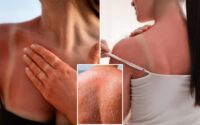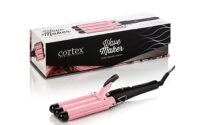What is slugging? How to do the skincare hack right, per experts
What the heck is slugging?
If your mind went directly to the slippery, slimy crawlers of the earth, then you’re on the right track.
Slugging is the process of slathering your face with goopy skincare products, leaving you with the look of a, er, slug.
But don’t run away from the slippery slugging skincare trend just yet! We promise there’s a lot more to it than a greasy canvas.
To sort it all out, we tapped expert Christine Adams, MBA, MSN, NP-BC, CANS.
Meet the expert
Christine Adams, MBA, MSN, NP-BC, CANS, is a board-certified nurse practitioner and certified aesthetic nurse specialist.

Adams has been in the medical field for over 20 years and owns her own practice, SkinSplendid, LLC.
At SkinSpledid, Adams focuses on the patient’s overall health and nutrition through a holistic approach.
What is slugging skincare?
Our first question for Adams was, “What the heck is slugging?”
“Slugging is just a catchy, trendy term that simply means slathering your dry skin with petroleum jelly,” said Adams. “The word ‘slugging’ comes from the reference to slugs since the petroleum jelly leaves a thick slimy appearance on the face.”
So, to clear things up, no actual slugs or slime is required.
Who is slugging good for?
Adams explained that slugging is good for “anyone with extremely dry skin.”
“I’ve had dry skin my entire life and have been ‘slugging’ my skin as long as I can remember,” continued Adams. “I also regularly teach my patients to do the same if their skin needs it.”
Though, Adams explained that dry skin could be a symptom of other underlying health problems, “such as thyroid disease.” Therefore, she recommends letting your provider know if you have any extreme skin conditions, “such as dryness or any recent skin changes.”
On the flip side, slugging can negatively affect those with acne-prone patients and those with oily skin, the SkinSpledid owner shared.
Wondering how to slug your face?
You’ve most likely seen the slugging trend on your TikTok For You page, but what’s the correct way to slug, you ask?

Adams puts it this way: “Slugging should be the very last step in your evening skincare routine.”
“You should cleanse your face, apply any serums, such as Vitamin C, apply your moisturizer and then liberally apply a petroleum-based jelly, such as Aquaphor or Vaseline,” she explains.
This is because petroleum jelly is occlusive, meaning it “creates a protective barrier that prevents moisture loss.”
Adams also recommends skipping retinol on nights you slug “because this could intensify the product and lead to more skin irritation and dryness.”
When and how often should you slug?
A common misconception about slugging is that you should do it every night, though Adams says otherwise.
“As a general rule, I tell my patients that they can slug one to two times per week to alleviate dry skin,” she shared.
While that’s her general rule, she also tells her patients to “listen to their skin” and slug as often as needed.
However, if slugging isn’t helping your dry skin, Adams recommends you see your healthcare provider to asses any underlying skin or medical conditions that could be causing the dryness. Because, in general, “healthy skin is not dry.”
Which kinds of products are good for slugging?
Before you reach for any product in your bathroom cabinet, Adams shares the types of products that are right for this skincare hack.
“Any petroleum-based product will work,” said Adams. “The goal of an occlusive product is to prevent moisture loss from skin to allow the tissue to hydrate.”
While any petroleum-based product will work, Adams’ go-to for slugging is Aquaphor “since it is a semi-occlusive product, and it does allow some oxygen to reach the skin.”
Adams shared her additional favorites below, and we are all about them.
Expert-approved slugging skincare products
Aquaphor Healing Ointment, $16

This healing ointment is ideal for dry, compromised, or post-procedural skin. We also love to lather it on our lips as an intense lip balm.
Vaseline Healing Jelly, $5

Another great option is Vaseline. A tried and true product, the original healing jelly is here to save the day. Add some on dry cuticles for alternative use.
CeraVe Healing Ointment, $11

Protect and soothe dry skin with CeraVe’s Healing Ointment. Best of all, it’s packed with hyaluronic acid and fights against eczema.
Skinceuticals Hydra Balm, $24

Originally created to treat post-operative recovery, the Hydra balm helps relieve symptoms of severely dry and sensitive skin while improving overall hydration.
Skinfix Remedy+ 911 Ointment, $26

This product is excellent for all skin types while being clinically proven to protect chapped, cracked and irritated skin.
Check out New York Post Shopping for more content.


